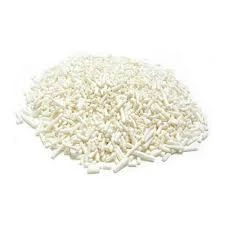
The Role of Acidulants in Enhancing Food Flavor and Preservation
The Role of Acidulants in Food Enhancing Flavor and Preservation
Acidulants play a crucial role in the food industry, serving as essential ingredients that enhance flavor, improve preservation, and contribute to the overall quality of various food products. An acidulant is defined as a substance that imparts acidity, thereby lowering the pH of food items. Common examples of acidulants include citric acid, acetic acid, malic acid, and phosphoric acid. This article explores the various functions of acidulants in food, their benefits, and some considerations for their use.
Enhancing Flavor
One of the primary functions of acidulants in food is to enhance flavor. Acidulants contribute to the tartness and sourness in foods and beverages that many consumers enjoy. For instance, citric acid is commonly found in citrus fruits and is frequently added to soft drinks, candies, sauces, and dressings to create a refreshing and tangy taste. The acidity also balances sweetness, making foods more palatable. This balance is particularly important in products like fruit-flavored beverages, where the right amount of acidity can elevate the overall flavor profile.
Preservation and Shelf Life
In addition to flavor enhancement, acidulants play a significant role in food preservation. By lowering the pH of food products, acidulants create an environment that inhibits the growth of spoilage microorganisms and pathogenic bacteria. This characteristic is especially valuable in products such as pickles, where acetic acid prevents spoilage and extends shelf life. Foods that are canned or preserved often rely on acidulants to ensure safety and longevity, particularly when they are stored without refrigeration.
Moreover, acidulants are also involved in the food fermentation process. In products like yogurt and sauerkraut, the natural fermentation of lactic acid from bacteria lowers the pH, creating a tangy flavor while boosting the food’s nutritional profile. This combination of taste and health benefits has contributed to the popularity of fermented foods in modern diets.
acidulant in food

Nutritional Aspects
Acidulants can also play a role in the nutritional quality of food. For instance, citric acid can enhance the absorption of certain minerals, such as calcium and magnesium, making them more bioavailable to the body. This is particularly beneficial in food products fortified with these minerals, as the presence of acidulants can improve their overall effectiveness in promoting health.
Considerations for Use
While acidulants offer numerous benefits, there are several considerations to keep in mind. The type and amount of acidulant can significantly affect the flavor and preservation aspects of a food product. Overuse of acidulants can lead to an overly sour taste that may be unpleasing to consumers, while insufficient use may not provide the desired preservation effects. Therefore, food manufacturers must carefully balance these elements to achieve the desired taste and safety levels.
Furthermore, individuals with certain dietary restrictions or sensitivities may need to be mindful of acidulant content. For example, those with acid reflux or stomach sensitivities might find highly acidic foods uncomfortable to consume.
Conclusion
In conclusion, acidulants are integral to the food industry, serving multiple purposes from flavor enhancement to food preservation. Their ability to create appealing tastes and safe products makes acidulants valuable ingredients in many food formulations. As consumers become more aware of their dietary choices, understanding the role of acidulants can help them make informed decisions about the foods they enjoy. With continued research and innovation, the application of acidulants in food will likely evolve, allowing for even greater culinary creativity and safety in food production.
-
Pure Sodium Dichloroisocyanurate Dihydrate | Powerful DisinfectantNewsAug.29,2025
-
Industrial Chemicals: Quality & Purity for Every IndustryNewsAug.28,2025
-
Nitrile Rubber Honoring Strict Production StandardsNewsAug.22,2025
-
Aspartame Ingredients Honoring Food Safety ValuesNewsAug.22,2025
-
Fertilizer for Balanced Plant NutritionNewsAug.22,2025
-
Cyanide Gold Processing with High Purity AdditivesNewsAug.22,2025
-
Formic Acid in Textile Dyeing ApplicationsNewsAug.22,2025
Hebei Tenger Chemical Technology Co., Ltd. focuses on the chemical industry and is committed to the export service of chemical raw materials.
-

view more DiethanolisopropanolamineIn the ever-growing field of chemical solutions, diethanolisopropanolamine (DEIPA) stands out as a versatile and important compound. Due to its unique chemical structure and properties, DEIPA is of interest to various industries including construction, personal care, and agriculture. -

view more TriisopropanolamineTriisopropanolamine (TIPA) alkanol amine substance, is a kind of alcohol amine compound with amino and alcohol hydroxyl, and because of its molecules contains both amino and hydroxyl. -

view more Tetramethyl Thiuram DisulfideTetramethyl thiuram disulfide, also known as TMTD, is a white to light-yellow powder with a distinct sulfur-like odor. It is soluble in organic solvents such as benzene, acetone, and ethyl acetate, making it highly versatile for use in different formulations. TMTD is known for its excellent vulcanization acceleration properties, which makes it a key ingredient in the production of rubber products. Additionally, it acts as an effective fungicide and bactericide, making it valuable in agricultural applications. Its high purity and stability ensure consistent performance, making it a preferred choice for manufacturers across various industries.





